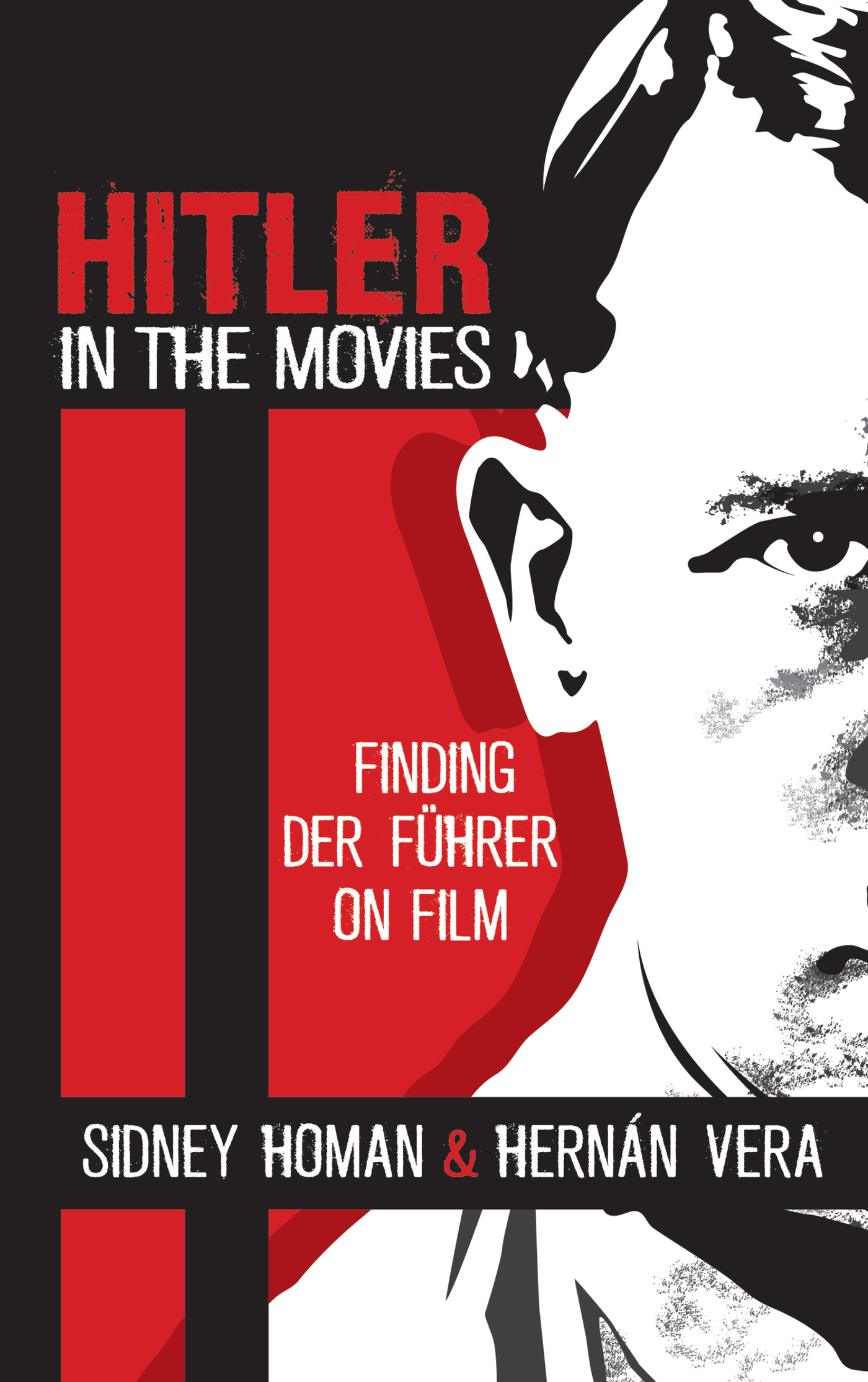Hitler in the Movies
Hitler in the Movies
Finding Der Fhrer on Film
Sidney Homan and Hernn Vera

FAIRLEIGH DICKINSON UNIVERSITY PRESS
Madison Teaneck
Published by Fairleigh Dickinson University Press
Copublished by The Rowman & Littlefield Publishing Group, Inc.
4501 Forbes Boulevard, Suite 200, Lanham, Maryland 20706
www.rowman.com
Unit A, Whitacre Mews, 26-34 Stannary Street, London SE11 4AB
Copyright 2016 by Rowman & Littlefield
All rights reserved. No part of this book may be reproduced in any form or by any electronic or mechanical means, including information storage and retrieval systems, without written permission from the publisher, except by a reviewer who may quote passages in a review.
British Library Cataloguing in Publication Information Available
Library of Congress Cataloging-in-Publication Data
Names: Homan, Sidney, 1938- author. | Vera, Hernn, author.
Title: Hitler in the movies : finding Der Fhrer on film / Sidney Homan and Hernn Vera.
Description: Madison [New Jersey] : Fairleigh Dickinson University Press ; Lanham, Maryland : Copublished by The Rowman & Littlefield Publishing Group, Inc., 2016. | Includes bibliographical references and index.
Identifiers: LCCN 2016002618 (print) | LCCN 2016004966 (ebook) | ISBN 9781611479256 (cloth : alk. paper) | ISBN 9781611479263 (Electronic)
Subjects: LCSH: Hitler, Adolf, 18891945--In motion pictures.
Classification: LCC PN1995.9.H514 H66 2016 (print) | LCC PN1995.9.H514 (ebook) | DDC 791.43/651--dc23
LC record available at http://lccn.loc.gov/2016002618
 TM The paper used in this publication meets the minimum requirements of American National Standard for Information Sciences Permanence of Paper for Printed Library Materials, ANSI/NISO Z39.48-1992.
TM The paper used in this publication meets the minimum requirements of American National Standard for Information Sciences Permanence of Paper for Printed Library Materials, ANSI/NISO Z39.48-1992.
Printed in the United States of America
To my dear colleague Hernn
Good night, sweet prince / And flights of angels sing thee to thy rest (Hamlet 5.2.36465)
Preface
Hitler in the Movies
My colleague Hernn Vera and I met some thirty years ago in a faculty seminar to which teachers had been invited to exchange ideas and devise new courses bridging their separate disciplines. This book on Hitler in filmwhat the movies reveal about how our culture interprets him and what that perception tells us about ourselvesgrew out of the numerous collaborations we had as teachers and scholars.
We echo here the questions raised by Ron Rosenbaum in his masterful study, Explaining Hitler. As many have wondered, how could such a sophisticated country as Germany, the country of Brahms, Bach, and Beethoven, and Goethe and Schiller, be seduced by, or let itself be seduced by, such an ordinary, little man? How could this parody of the Aryan superman, with his small stature, bulbous nose, and dark complexion, so advance his notion of Aryan superiority? To be sure, the mans talents should be acknowledgedhis ability to sway a crowd with the emotional delivery of empty slogans, a series of brilliant gambles early in his career, the fascination he had for people like Joseph Goebbels and Putzi Hanfstaengl, who were his intellectual and artistic superiors. Did he create the Germany of the 1930s and 1940s, or was he Germanys creation? What confluence of historical events made the soil so fertile for this deception?
Nor does Hitler himself help us in this search for reasons. He offers only a series of false cues and erasures. Almost everyone agrees that, like many autobiographies, Mein Kampf is self-serving, a fictive portrait. Along with obvious factual errors, most of them intentional, Hitler wrote it to pave his way back into politics after his imprisonment at Landsberg. Mein Kampf is the creation of a persona in the purest sense. Hitler was the consummate actor and role-player, at one point even hiring a well-known Berlin actor to coach him, then literally staging, with the help of Albert Speer and Goebbels, his every appearance, whether before thousands at the Nuremberg rallies or at intimate dinner parties. His official photographer, Heinrich Hoffman, was instructed never to show him in a bathing suit or driving a car. He also had his own personal filmmaker, Leni Riefenstahl. With the help of these attendant lords he would superimpose on reality the character he had invented.
The title of Pirandellos Right You Are If You Think You Are may extend to all of us. We engage in self-fashioning, playing author to ourselves, as Stephen Greenblatt observes, so that our resulting self represents a continuous negotiation between what we wish to be and the worlds opinion of us, or what the existentialist would call the gaze of the other. With Hitler, this continual remaking is magnified. Just as the German people are subject to him, he is ruled by his own self-fashioning.
Not a survey of Hitler movies, this book, instead, considers the Fhrers image in feature films as well as documentaries and docudramas to examine how others, like ourselves, have tried to explain how he became so radical, so absolutely evil. Everyone knows about Hitler, the H word itself so ingrained in our culture that his first name has become a badge of infamy, and today is rarely used for infant boys.
Movies about Hitler and Nazi Germany are some of the most obvious signs of a popular fascination, whether they are serious or exploitative. And while films about Hitlerand, by extension, all Nazis, the Third Reich, and National Socialismmay at times be intended as philosophical or political tracts, or theological inquiries into the source of his evil, they have, in another sense, an innocence, a naivet about them that scholarly exegesis cannot always match. Films are subject to other constraints the scholar does not encounterfilm aesthetics, the nature of the medium, the need to turn a profit, even addressing popular fears or needs. In more serious works, of course, the portrait of Hitler will reflect how the director or the actor, and in Charlie Chaplins case the director-actor, perceives Hitler. In less serious-minded works, such as the 1950s They Saved Hitlers Brain, the screenwriter and director offer us what they think the public audience wants and hence will buy.
In our day, the psychological portraits of Hitler have shown a human figure, like the recent Hitler film from Germany, The Downfall. On the other hand, if we portray him as the frustrated artist, as in Max (2002), do we in part excuse him? The controversy over showing a human side to Hitler may admit a larger issue: we cannot bear the fact that he was one of us.
In this study we include docudramas along with documentaries, from the Nazi Triumph of the Will and American World War II propaganda films to the spate of documentaries now so popular on the History Channel. The very word documentary suggests an inquiry based on facts, but documentaries invariably raise the question of how those facts are handled, what is included and what is excluded. In film, this observation embraces everything from camera angle to the narration.
The book is divided into five chapters according to genre.
In chapter 1, The Comic Hitler, we look at the early portraits of Hitler as a buffoon, the butt of what was often an admittedly nervous humor, such as Chaplins
Next page
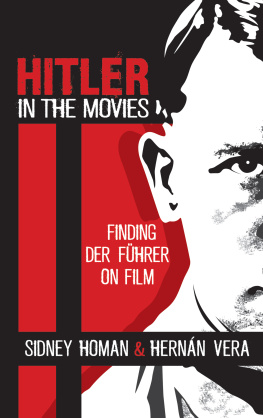



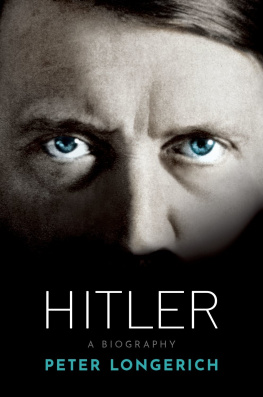


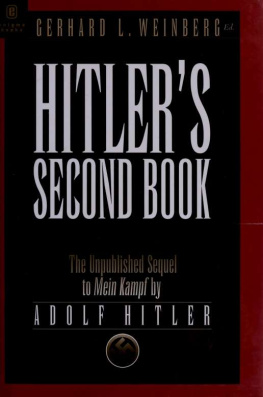


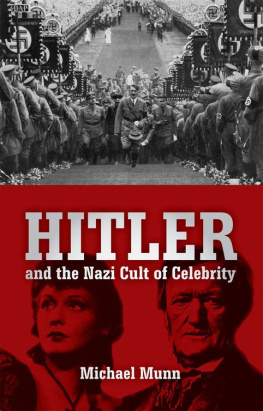

 TM The paper used in this publication meets the minimum requirements of American National Standard for Information Sciences Permanence of Paper for Printed Library Materials, ANSI/NISO Z39.48-1992.
TM The paper used in this publication meets the minimum requirements of American National Standard for Information Sciences Permanence of Paper for Printed Library Materials, ANSI/NISO Z39.48-1992.